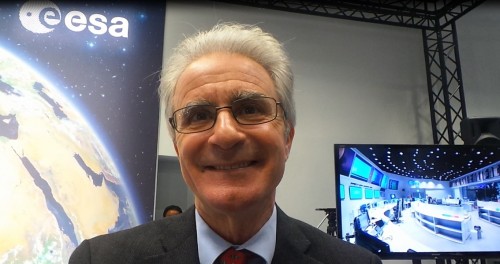We are approaching a small object, about which nothing is known, which has an irregular shape, an unusual gravitational potential, dust and gas around it, and at the same time model it so that we can more accurately orbit around it.

Note: The interview took place in the afternoon, before the Pilae landing and the problems that followed.
"The last few months have been fascinating. The 20-30 year preparations for Rosetta finally paid off." This is what Paulo Ferri, director of ESOC - European Space Operations Center, said today (Wed) in an interview with the science website during the events of the Philae landing that successfully separated from Rosetta and is expected to land on comet 67P Churyumov-Grasimenko.
"When we got to the comet we had to learn from scratch how to fly. This is not a typical space mission. We are approaching a small object, about which nothing is known, which has an irregular shape, an unusual gravitational potential, dust and gas around it, and at the same time model it so that we can more accurately orbit around it. The engineers had to change the design all the time. We obtained excellent information and this will continue throughout the life of the mission, until the end of 2015. Today's event, the landing is only a mission episode, but it is impressive, it is something that has not been tried before so we expect full success."
The scientist: As we all know, the technology that is embedded inside the spacecraft is outdated technology to begin with. This is about a spacecraft that was built 20 years ago for several years. After that she waited several years for the launch, and of course ten years of journey, is the technology still relevant?
Perry: "When it comes to information technology - the power of the computer, the size of the memory and the bit transfer rate, the technology found in Rosetta is extremely outdated, but there are other areas where we developed technologies specifically for Rosetta and they are still at the forefront of technology, for example, low-density solar collectors designed to operate at low temperatures are still sophisticated and high-tech today. There are also very sophisticated scientific instruments in the spacecraft and lander, for example an atomic force microscope. As we speak, Rosetta is receiving from Philae and transmitting to Earth the images of Rosetta from outside taken by Philae, later it will photograph the surface while approaching."
How long is the landing planned to operate?
"The planned initial sequence of operations depends on the lifespan of the batteries - 60-70 hours. When the batteries run out, Philae will use its solar panels and according to the assessment and the terrain conditions, it can extend the activity between 3 and 5 months, that is, sometime between January and March 2015."
What can you say about the challenge of escorting the comet towards the sun?
"It is indeed a challenge. As the comet gets closer to the sun, its activity will increase and this will cause a cloud of dust and water to erupt from it and its particles to disrupt the movement of the spacecraft. At some point we will have to go backwards and fly in orbits further away from the comet's nucleus. But this is a spectacular phenomenon and it is less important if we observe it from a distance of 20 kilometers or 500. Our goal is to observe this evolution of the comet as it orbits the sun."
Is the decision to end Operation Rosetta at the end of 2015 budgetary or technological?
"First and foremost, this is a budgetary decision, but it is based on an estimate of the lifespan of the spacecraft as it and the comet get closer to the Sun. If the spacecraft maintains its health, I am convinced that we will find a budget, but even then it will only be able to continue for another year - until the end of 2015, when Rosetta will arrive together with the comet at such a distance from the sun that it will be too large for its solar collectors to produce enough energy and then or we will have to reinsert it into a coma for three years, or we will declare the mission over. One of the proposals is to also land Rosetta herself on the comet at the end of her life, but there is still a lot of time and we will decide when the time comes."

7 תגובות
What is the point of also landing Rosetta on the comet? Does it also have a research tool? Or is it just for the training in putting?